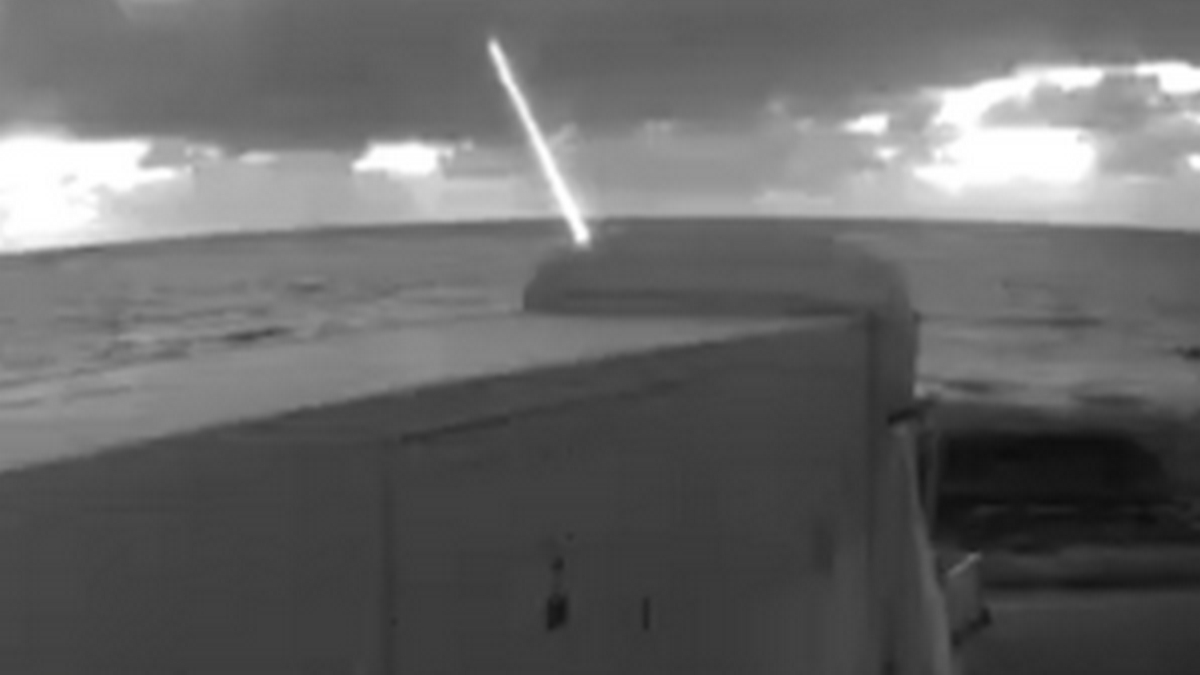The United Kingdom recently tested its DragonFire laser weapon.
The high-powered laser weapon is said to be capable of shooting down drones travelling as fast as 650 kilometres per hour (kmph) – twice as fast as an F1 race car. The trials were conducted at the Ministry of Defence’s Hebrides Range in Scotland by the British Royal Navy.
But what happened? What do we know about the laser?
Let’s take a closer look.
DragonFire laser
The DragonFire laser is a high-powered energy weapon. It was developed by MBDA UK, Leonardo, QinetiQ, and the UK Ministry of Defence. It is built to take down drones, missiles, and other airborne threats. It does so by using an intense, concentrated beam of light to cut through the target.
The UK Ministry of Defence claims the laser “can engage targets at the speed of light” and that it has “greater accuracy while reducing the reliance on high-cost ammunition”. Officials say each shot costs around $13 (Rs 1,161) and that it can hit “a £1 coin from a kilometre away”. When it comes to targeting a warhead, this can result in structural failures.
“It is a more cost-effective method in comparison to traditional missile systems , which cost upwards of hundreds of thousands of pounds per shot,” officials said. The UK Defence Ministry has signed a $417 million (Rs 372.6 crore) deal with MBDA UK to install these DragonFire lasers onto Royal Navy vessels starting in 2027. This is five years earlier than its previous operational schedule.
UK officials have said that the first laser would be installed on a Type 45 destroyer, followed by Type 26 frigates that are still being built.
How it works
The video released by the UK Ministry of Defence shows the DragonFire laser system taking on an incoming drone. It first tracks the drone before locking on and shooting a targeted beam of light at the unmanned aerial vehicle (UAV). The target can then be seen falling out of the sky with smoke emanating from it.
The DragonFire laser system is mounted on a turret. It also uses an electro-optical camera and a second low-power laser for tracking. It can chart the flight of incoming drones and other objects over the horizon, lock on, and then target them.
Its beam director, made by Leonardo, harnesses and directs the powerful laser energy at the target. While many of the details are classified, the laser is in the 50-kilowatt class. The destroyers it will be mounted on also have the SAMPSON radar system that can reportedly track targets around 400 kilometres away. There are also plans to incorporate the laser system into Army vehicles and future Royal Air Force combat aircraft.
MBDA’s UK Managing Director Chris Allam has called it a “truly game-changing weapon system”, while Defence Minister Luke Pollard said it will place the Royal Navy “at the leading edge of innovation in NATO” and increase the UK’s ability to counter modern aerial threats.
“We are backing British industry and delivering a cutting-edge capability in a new era of threat,” Pollard added.
Other laser weapon systems
With DragonFire, the UK has become the European nation to have such an advanced high-power laser weapon system. It is also the first among the NATO nations to have such an advanced directed energy programme.
But the quest for such laser weapons is nothing new. In the 1980s, then US President Ronald Reagan announced his ‘Star Wars’ programme, named after the iconic film franchise, to defend America and shoot down Soviet missiles.
However, America has been looking into these sorts of weapons since the 1960s. This DragonFire system isn’t one of a kind either. Israel has spent over $500 million (Rs 446.7 crore) to develop its Iron Beam laser system.
In July 2025, Russia reportedly tested its new Posokh laser air defence system against drones. The UK Ministry of Defence in December 2024 placed a high-energy laser on top of the Wolfhound armoured vehicle, using it to take down drones with an infrared light. The US Army in 2023 received the Leonidas laser system from Epirus.
The US Pentagon is ploughing $1 billion (Rs 8,934 crore) every year into research and development, according to a study from the Emerging Technologies Institute. There are dozens of projects that are currently underway, many with ties to the US Navy, US Army, and the US Air Force. Lockheed Martin has also proposed trials for its High-Energy Laser with Integrated Optical-Dazzler and Surveillance (HELIOS) weapon.
It remains to be seen who will grab the edge in this new and exciting field of combat.
With inputs from agencies
)